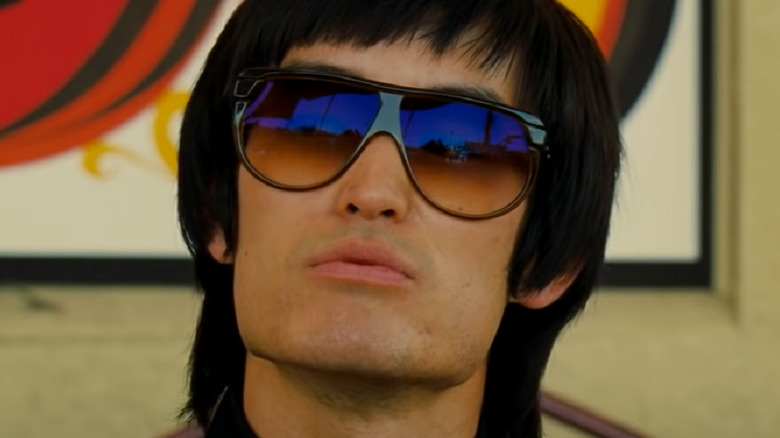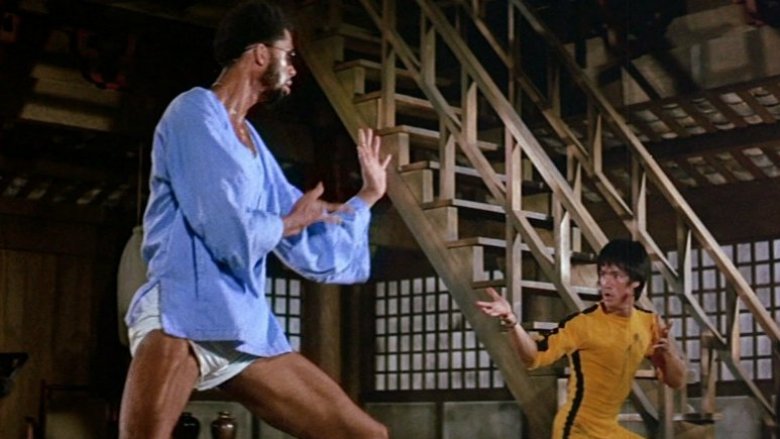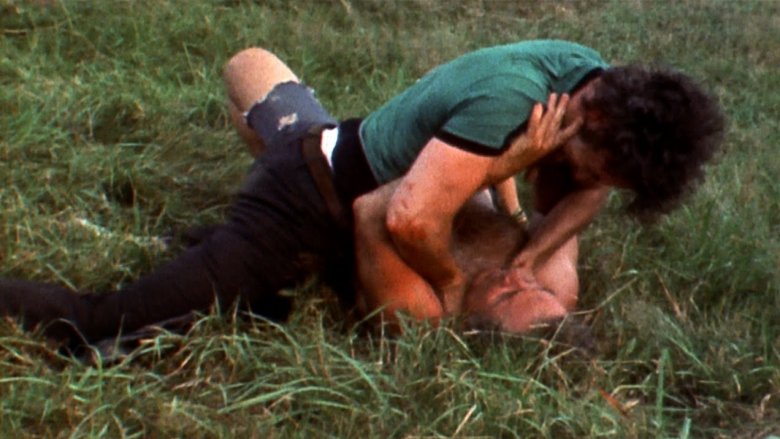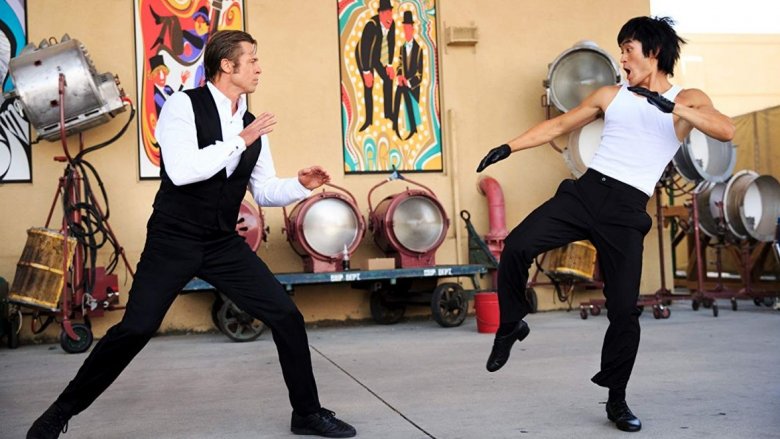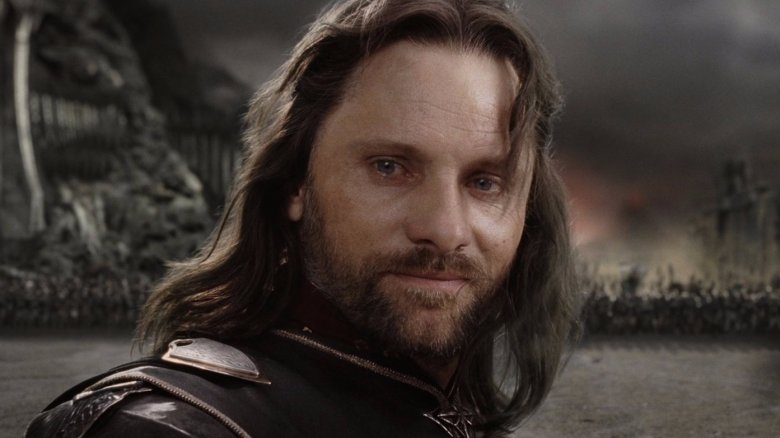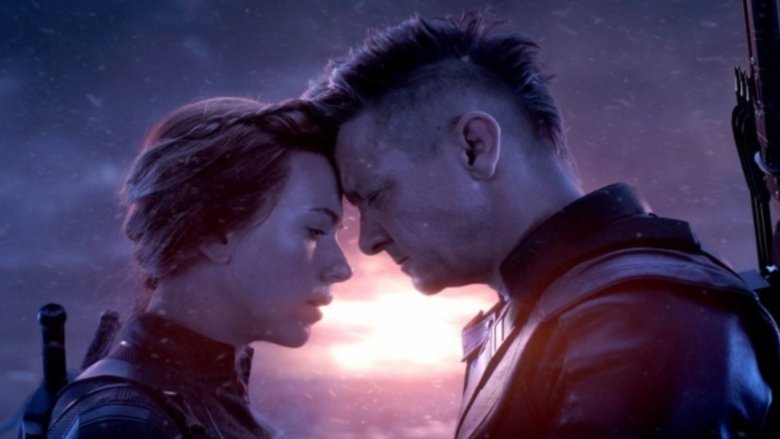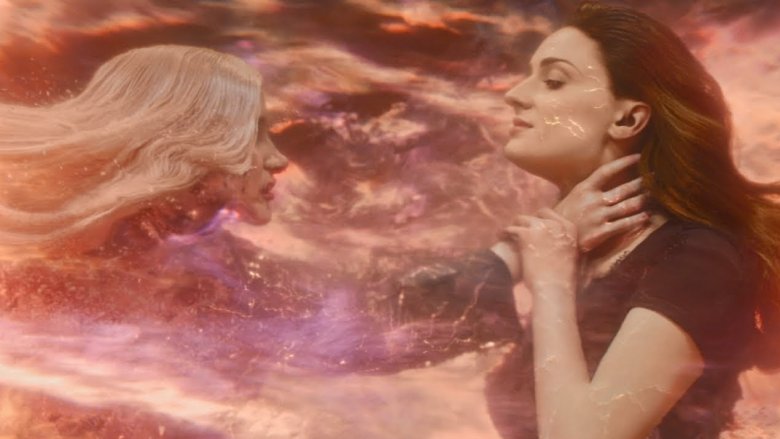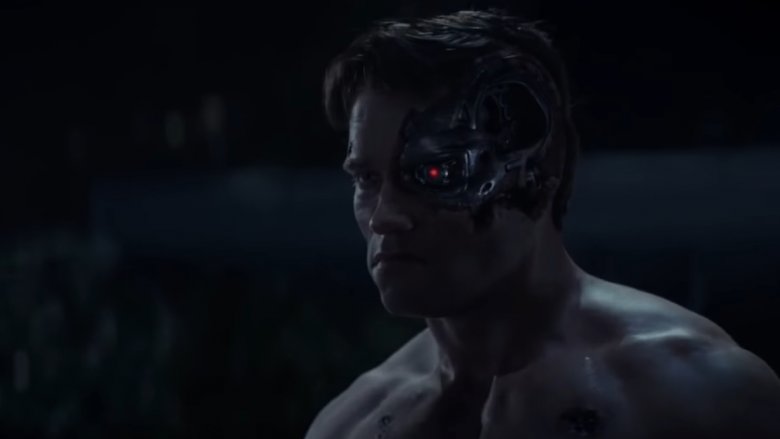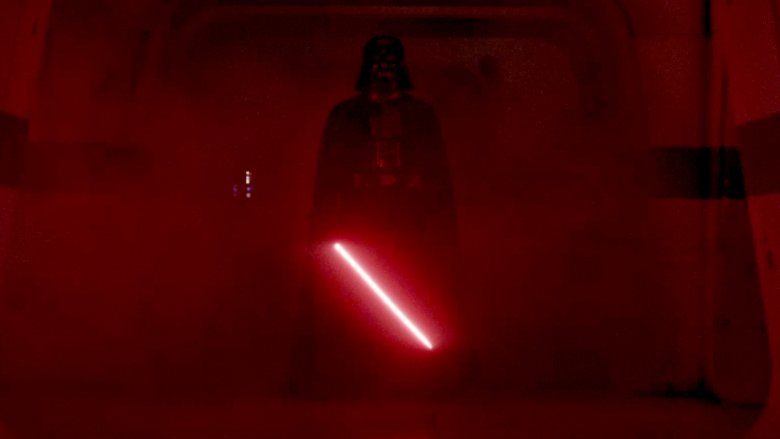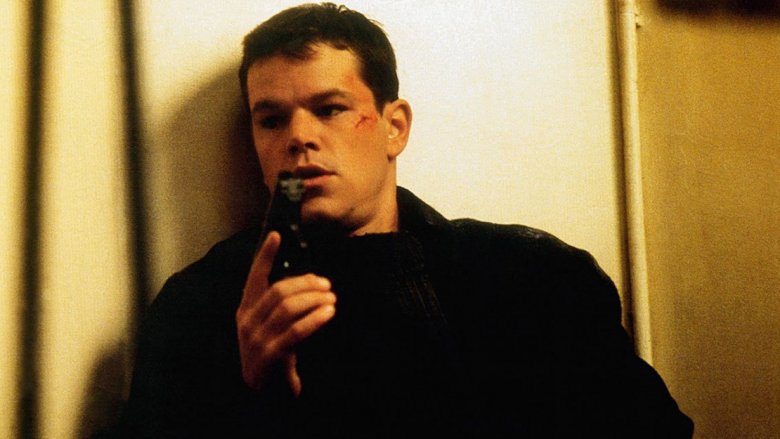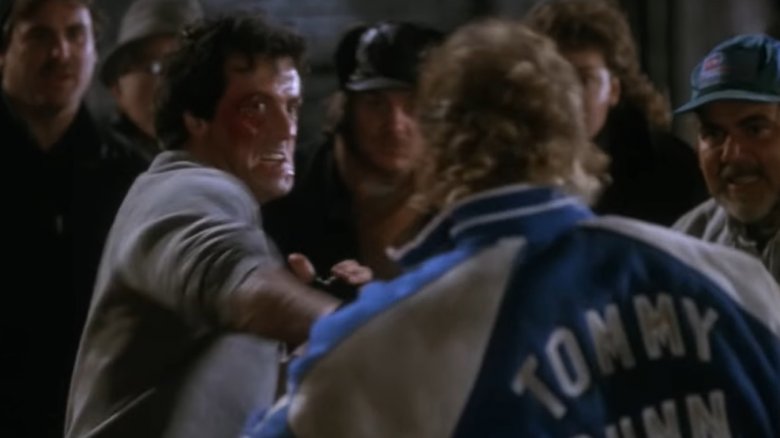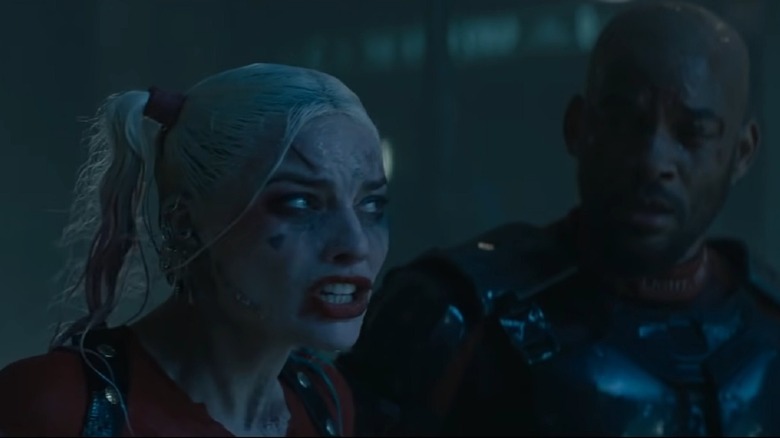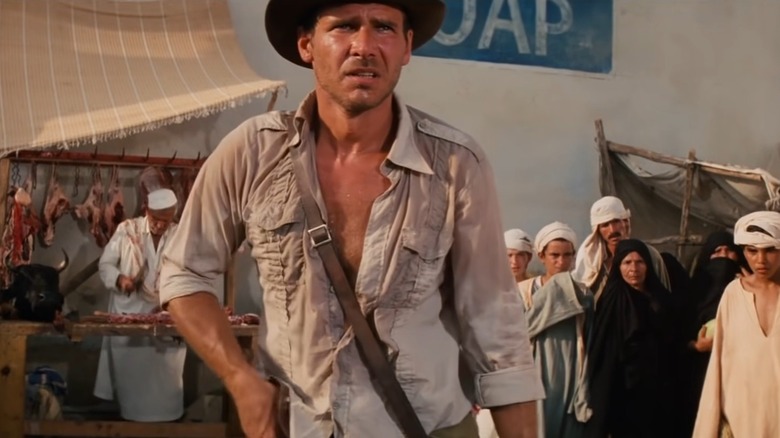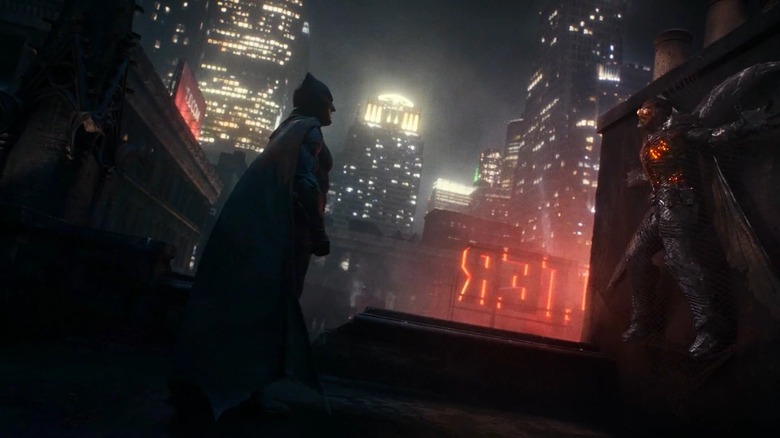Fight Scenes That Were Never Supposed To Happen
Movies don't always go according to plan, especially when it comes to action scenes. Budget cuts, actor availability, technological limitations, and countless other factors can change how things go. Sometimes this means that the best scenes weren't in the original script, and yeah, that even includes some of the most memorable moments in the history of fisticuffs.
We're talking about iconic fight scenes from beloved franchises or the work of famed auteurs. Many of the kicks, blows, and parries that have become a part of pop culture were a result of some last-minute choreography. These brilliant and brutal battles only showed up on-screen thanks to a reshoot, a small tweak, or a drastic rewrite. Sometimes, these scenes even dramatically changed endings, and occasionally, they got out of hand and actually sparked bad blood in real life. From fantasy battles to mano a mano death matches, here are the fight scenes that were never supposed to happen.
Game of Death's title is too literal
"Game of Death" was Bruce Lee's last film, in a technical sense. Released posthumously, it tells the story of martial arts star Billy Lo, who must fake his own death to find out who's trying to kill him. Around 40 minutes of footage were shot before Lee passed away in 1973, but when the movie was finally released in '78, only 11 minutes made it into the final film. And sadly, most of the fight scenes throughout the movie didn't involve Lee.
"Enter the Dragon" director Robert Clouse was the man brought in to finish the movie after Lee's death, and he spent most of his time finding inventive ways to not show Lee's character. Several doubles — including martial artist Yuen Biao, who did some doubling for Lee in "Enter the Dragon" — filled in for the fight scenes. As for the rest of the movie, most of the time Lee's character is wearing disguises, hiding in the shadows, or has his face obscured. One scene infamously includes a cardboard cutout of Lee's face pasted on a mirror. Most importantly, nearly every fight scene features a different actor pretending to be Lee, and it's painfully obvious. Nobody can move quite like Lee, and it's impossible to replace such a martial arts legend.
Stop! Hammer fight!
"Maidstone" by Norman Mailer was a prime piece of 1970s American New Wave cinema, a semi-improvised drama about a filmmaker running for president while making a documentary and fighting anyone who crossed his path. The movie has been mostly forgotten, except for one scene — the hammer fight that got too real.
The movie starred Mailer as Norman Kingsley, a fictionalized version of himself, and Rip Torn as his brother, Raoul Rey O'Houlihan. Torn was famously difficult on set to begin with, often fighting with co-stars, and sometimes, he got way too into character. What was originally supposed to be a small tussle turned into full-on brawl, far beyond what Mailer intended. Soon enough, Torn hit Mailer with a hammer (a toy hammer, according to Torn), and the two wound up wrestling on the ground and biting each others' ears.
Torn claims that the injuries he inflicted were minor, but Mailer lost trust in him. On the other hand, Mailer wanted the scene to be loose and unscripted, and Torn gave him exactly what he wanted. Contemporaneous reviews are few, but most note the hammer fight as the only memorable part.
Once upon a fight scene
One of the most discussed scenes in Quentin Tarantino's "Once Upon a Time in Hollywood" was the fight between Bruce Lee (Mike Moh) and Cliff Booth (Brad Pitt). The two square off in a two-out-of-three falls fight. Lee picks up the first knockdown, Booth picks up the second, but they're interrupted before they can finish their match. However, this wasn't the fight scene planned in the script. In fact, the scene played out this way because all parties involved held Lee in too high a regard.
The third fight was originally going to be much longer and more competitive, with Cliff picking up victory via a "cheap shot." The goal wasn't to show Lee as weak. It was to show how Booth operated and make him more credible as a fighter for the audience. It is, after all, the first time we see Booth throw down in the movie, and it's arguably his only fight against someone trained for one. Merely being a stuntman doesn't make one worthy to fight the Manson family, after all.
However, Pitt and stunt coordinator Robert Alonzo had reservations about Lee losing, given his place in entertainment history. Alonzo had Pitt and Moh train for months on the scene, trying to choreograph a way for Lee to lose without tarnishing his image. Tarantino eventually decided to have them interrupted with no winner declared.
Return of the king but not of Sauron
"The Lord of the Rings: The Return of the King" features Aragorn (Viggo Mortenson) facing off against a giant cave troll during the big battle outside the Black Gates. It's an awesome fight, but it's also hardly the main attraction. And that's probably because this scene wasn't in the source material, wasn't originally shot that way, and most importantly, wasn't supposed to happen at all.
When wrapping up the trilogy, the "Lord of the Rings" team had two thoughts. First, Sauron needed to appear in some physical form besides the eye. Second, Aragorn needed to fight Sauron to continue his personal journey. An entire sequence was scripted, storyboarded, and shot where Sauron shows up before the army. A blinding white light appears, and Sauron appears as Annatar, the angelic form he took when he tricked the elves into making the One Ring, before taking his true form as a giant black knight and fighting Aragorn.
But the filmmakers realized this scene just wasn't working. It detracted from the main story about Sam and Frodo, and it undermined Aragorn's role as a self-sacrificing military leader. It also looked like a clunkier fight than they wanted. They repurposed the footage later so Aragorn would go toe-to-toe with a massive troll, resulting in an epic battle of fantastical proportions.
Endgame's fight between Natasha and Cliff was originally way bigger
In a movie full of striking scenes, one of the most striking in "Avengers: Endgame" was the battle between Hawkeye (Jeremy Renner) and Black Widow (Scarlett Johansson), where the two fight over who would throw themselves over the cliff to acquire the Soul Stone. Basically, this scene brought the superhero concept of self-sacrifice to its literal and logical endpoint. It was also never in the script, and it only came about in reshoots when the original version was already in the can.
The scene as originally shot had Thanos and his army showing up at Vormir, leading to a small battle between them and Natasha and Clint. During the conflict, Natasha runs for the cliff while Clint both tries to stop her and fight off the attack. The scene tested well with audiences, but new ideas began to form by the time reshoots started. As such, the filmmakers reshot the scene to make it more "intimate," and so that it "serviced Natasha a little bit more."
Dark Phoenix's third act is reborn
It's hard to talk about "Dark Phoenix" without talking about all the reshoots and resulting controversy. Big chunks of the second and third act were changed. This includes no less than two fight scenes being wholesale reworked, including one moment because it was too similar to another superhero movie.
One of the most hyped parts of "Dark Phoenix" was a potential attack on the United Nations building. Local media in Montreal shared pictures of the set, and reports implied that Jessica Chastain was playing a Skrull who would be part of the assault. By the time Dark Phoenix hit theaters, however, the attack was nowhere to be found. The scene was replaced by the much smaller scale fight in New York, likely shot on a sound stage.
There was also a space battle planned, culminating in an alien invasion. This was scrapped because, according to James McAvoy, "There was a lot of overlap and parallels with another superhero movie," and we're thinking that was most likely "Captain Marvel." So the scene was replaced with the battle on the train, a much smaller fight that didn't exactly do the movie any favors.
Terminator Genisys features two CGI Arnolds
The "Terminator" series has always been renowned for its special effects, winning many awards and acting as the launching pad for future award-winning SFX artists. "Terminator Genisys" took this to its logical extreme by featuring a fight scene created entirely with two CGI T-800s, both played — in the loosest sense of the term "played" — by Arnold Schwarzenegger.
The battle at Griffith Observatory between the two T-800s was featured prominently in the trailer. However, the filmmakers weren't crazy with the scene after they finished filming. The production company wanted the battle to be "more brutal" than originally shot, but instead of flying in Schwarzenegger and the rest of the crew in for an expensive reshoot, they added to the fight scene using two completely digital Governators. The added scenes were far more violent, and they would've been difficult to pull off with human actors. The production team also used molds from the original 1984 "Terminator" movie to make doubly sure the younger T-800 was accurate.
Rogue One added Vader's fight at the last minute
"Rogue One: A Star Wars Story" ends with Darth Vader single-handedly slaughtering a hallway full of Rebel soldiers before the plans for the Death Star narrowly escape his grasp. It's a brutal, one-sided fight scene, especially by "Star Wars" standards. It also wasn't in the script and was only added in reshoots.
"Rogue One" attracted a lot of attention for its reshoots, even though they're relatively common in Hollywood, especially for blockbusters. In fact, they're often built into a movie's production schedule. However, the original plan here was having the Death Star data get to Leia via a handoff process with Vader in pursuit. But the filmmakers decided at the last minute to add a little kick to it, and they added the scene where Vader boards the ship. As this was in reshoots, the original "Rogue One" Vader couldn't fill in, so a new actor had to don the iconic armor.
The Bourne Identity stairway fight almost didn't happen
One of the final fight scenes in "The Bourne Identity" features Jason Bourne (Matt Damon) fighting off an attacker and getting away from a second gunman. Bourne escapes by using the corpse of the first assailant as a way to break his fall down a flight of stairs. It's one of the most memorable scenes from the first film of an iconic franchise. It also wasn't supposed to happen in the original script.
The production of the movie was a little fraught, behind schedule, and over budget. And then Universal showed a rough cut of the movie to a test audience, and as a result, the studio decided that the film needed a bigger action sequence towards the end. The filmmakers were hesitant, because during shooting, they kept getting outlandish suggestions about how to add some punch to the movie. They wanted a character-driven thriller instead of a big action blockbuster. But eventually, they landed on the stairway fight scene, much like Bourne landed on his meatshield, and added it during reshoots.
Rocky V originally ended with Rocky dying
"Rocky V" finds the titular hero (Sylvester Stallone) out of boxing due to brain damage and out of money due to financial mismanagement. He takes young fighter Tommy Gunn (Tommy Morrison) under his wing, but the whippersnapper slowly becomes resentful of his mentor. The film ends with Gunn and Balboa having a street fight, where Rocky is roughed up but ultimately wins. This victory wasn't supposed to happen, and the original ending was much darker.
For most of the production, the planned ending was for Rocky to die in the street fight. He would take a great beating from Gunn and then die on the way to the hospital in Adrian's lap. She would then hold a press conference, telling the crowd that the spirit of Rocky lives on in people who believe in themselves. Director John G. Avildsen thought it was a perfect ending. Stallone felt sick writing it.
A few weeks into shooting, the studio called Avildsen and forced him to change it. They reasoned that heroes — specifically citing Batman, Superman, James Bond — don't die. (It's worth noting that, in the ensuing years, at least two of those three examples have died at least once.) As such, the fight scene was changed. Avildsen thought that the new ending hurt the movie, telling 94WIP that "Rocky didn't die, but the movie died because that was the point of the movie."
Suicide Squad vs. Enchantress
The road to David Ayer's "Suicide Squad" is a story worthy of its own film. After the lackluster reception of "Batman v Superman: Dawn of Justice," Warner Bros. panicked, as per The Hollywood Reporter. "Suicide Squad" was already deep into post-production with merely a few months left until its release date; however, the studio ordered some substantial reshoots, particularly to the film's final act. In the theatrical cut's climax, Task Force X faced off against Enchantress and her brother, Incubus, in a big CGI spectacle. Diablo ended up sacrificing himself for the greater cause, while the rest of the Squad learnt about the value of teamwork and honor among thieves. Fairly safe ending, right?
Judging by the film's trailers, it was clear that the film had been heavily modified. The snippet of the Joker, with a burnt face and holding a grenade, was cut from the final version altogether. As it turns out, this was originally supposed to appear in the final act, as revealed by Ayer on his Twitter account. The Joker was meant to have teamed up with Enchantress in a bid to get Harley Quinn back, Harley would have rejected him and stayed with her pals, who would have helped her fight back against Mr. J. Oh, and Diablo wasn't meant to die either, while Harley and Deadshot would have become a couple, according to another Ayer tweet. Maybe the Ayer Cut might still see the light of day in the future.
Indiana Jones' Lost Ark fight was originally different
Steven Spielberg's "Raiders of the Lost Ark" is considered one of the greatest films of all time, with its legacy cemented by its inclusion in the National Film Registry. Part of its success is attributed to Harrison Ford's Indiana Jones, who established himself as the ultimate swashbuckling adventure hero, one who isn't afraid to engage in fisticuffs. However, one of his most iconic fight scenes from "Raiders of the Lost Ark" was simplistic. As a swordsman spins his weapons around and everyone anticipates Indy having to duck and dodge the blades, Ford's character whipped out a pistol and put his opponent down with one shot.
The hilarious battle is fondly remembered by fans of the film, though it wasn't originally how the scene was intended to play out. In a Reddit AMA, Ford revealed the reason for the change. "I was suffering from dysentery, really, found it inconvenient to be out of my trailer for more than 10 minutes at a time," he wrote. "We'd done a brief rehearsal of the scene the night before we were meant to shoot it, and both Steve and I realized it would take 2 or 3 days to shoot this." Ford explained that since he wasn't feeling well and he had already done a major scene against several villains before that, he proposed to Spielberg that he just shoot the swordsman. Thankfully for Ford's aggravated bowels, Spielberg agreed to the suggestion.
Batman's rooftop battle in Justice League
Ah, "Justice League," the Internet's biggest talking point since comic book movies became the next big thing. The stories of Warner Bros.'s interference in this production are legendary, with director Zack Snyder stepping away and the studio getting Joss Whedon to practically redo it. While mustache-gate dominated most of the headlines, there was a new action scene shot by Whedon that didn't feature in Snyder's original cut. Right at the start of the film, Batman used a thief (played by Holt McCallany) as bait to draw out a Parademon. The scene also became something of a meme due to Batman openly saying Alfred's name in front of the thug, making the whole secret identity angle moot in the process.
If there were any doubts that this was a Whedon reshoot, McCallany confirmed it to Men's Journal. "My scene with Batman was originally conceived as a comedic scene," he said. "That's how Joss wrote it, and that's how we shot it. I thought it came out great, but the studio felt it would be a mistake to open the film with a completely comedic scene, so it was re-edited a little bit." According to McCallany, Whedon sent him a bottle of champagne and a note as an apology for the studio's changes.
